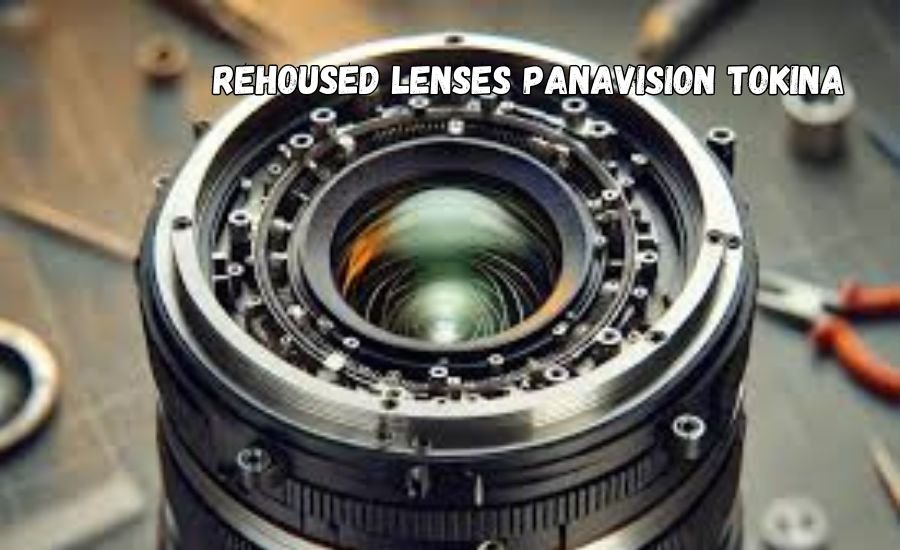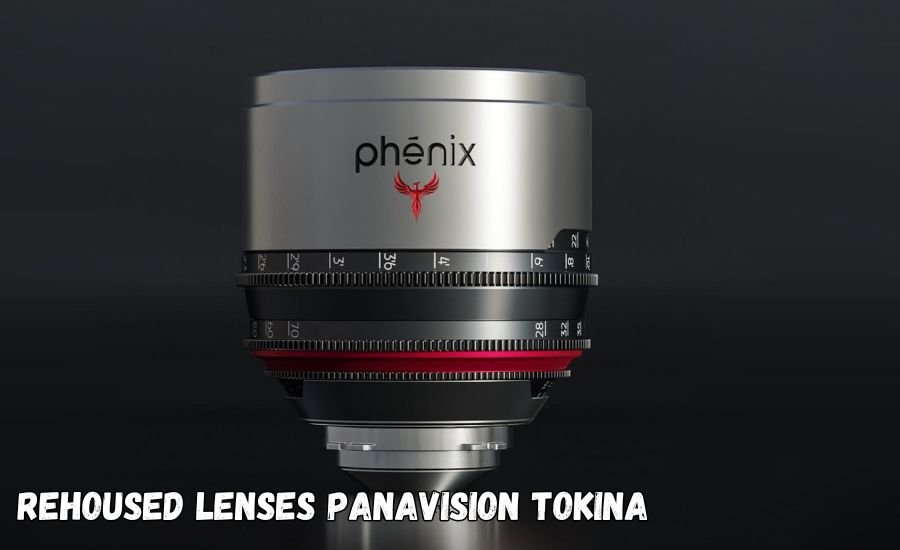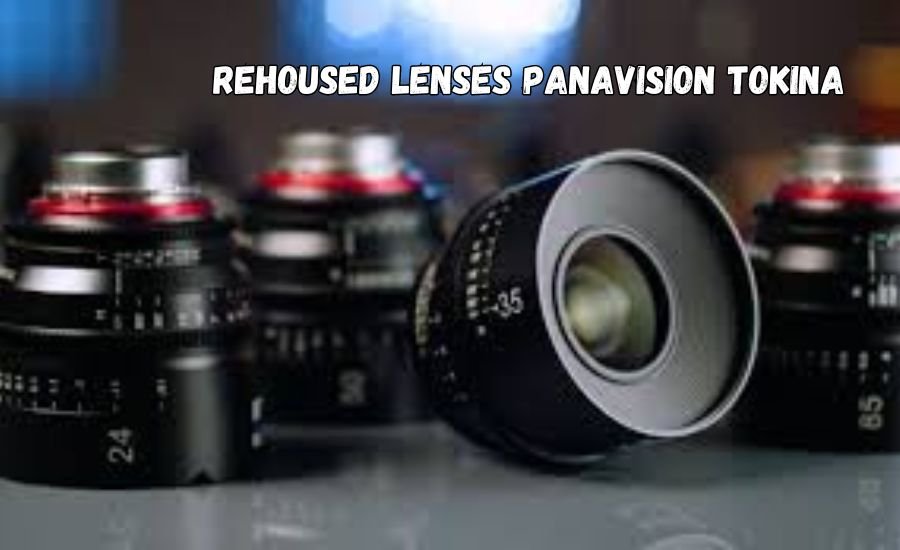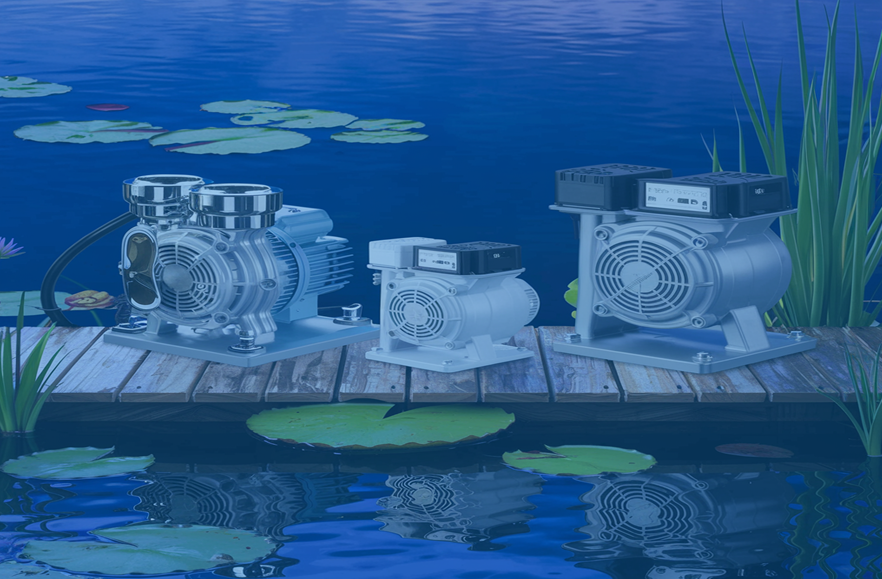Rehoused Lenses Panavision Tokina: Elevating Your Visual Storytelling with Modern Performance

In filmmaking and photography, choosing the right lenses can make all the difference between a good project and a visually stunning masterpiece. Rehoused lenses have become an indispensable tool for filmmakers, offering a blend of vintage optical charm with modern performance and durability. When it comes to high-quality rehoused lenses, two brands stand out: Panavision and Tokina. Both are known for their craftsmanship and optical precision, making their rehoused lenses a popular choice for professionals looking to enhance their visual storytelling.
This article will dive deep into everything you need to know about rehoused lenses from Panavision and Tokina. We’ll explore how they work, why they’re important, and how they can elevate your next creative project.
What Are Rehoused Lenses?
At their core, rehoused lenses are classic or vintage lenses that have been modified with new, more durable housings. This process preserves the unique optical characteristics of older lenses while improving their functionality to suit modern filmmaking equipment. The idea is to give these older lenses a “new life” by making them compatible with today’s cameras and production environments.
Rehoused lenses are often designed to be more robust, handle intensive use, and allow for smoother focus and zoom controls, making them more practical for professional cinematography. Many rehoused lenses also include enhanced features like gear rings for follow-focus systems, making them easier to operate on set.
Why Choose Rehoused Lenses?
When comparing rehoused lenses to standard lenses, there are several reasons why a filmmaker or photographer might choose the former. Rehoused lenses offer unique advantages, especially for those working in demanding production environments:
1. Durability
One of the biggest advantages of rehoused lenses is their increased durability. Since they are often built with stronger, more resistant materials, they are better equipped to handle the wear and tear of daily use on a busy film set. Whether you’re shooting in a studio or in extreme outdoor conditions, rehoused lenses offer peace of mind that they won’t break down easily.
2. Enhanced Control and Ergonomics
Rehoused lenses also offer better ergonomics compared to their original versions. Many include standardized gear rings, allowing for smoother focus pulls and better integration with modern follow-focus systems. This provides a more intuitive and efficient shooting experience, helping filmmakers to make precise adjustments quickly and easily.
3. Optical Performance
Rehousing a lens can also improve its optical performance. By recalibrating certain elements of the lens, rehoused lenses can reduce common issues such as flare and distortion. This leads to sharper, clearer images that maintain high-quality color rendition across different lighting and shooting environments.
Benefits of Using Rehoused Lenses
Now that you understand what rehoused lenses are, let’s look at their specific benefits. Whether you’re a cinematographer, photographer, or director of photography, using rehoused lenses from Panavision or Tokina can significantly elevate the quality of your work.
1. Unique Aesthetic Qualities
One of the main reasons filmmakers opt for rehoused lenses is to capture a certain aesthetic that standard lenses can’t achieve. The vintage look that rehoused lenses from Panavision and Tokina offer is highly sought after in many high-end productions. These lenses bring a classic cinematic look that adds depth and texture to visual storytelling.
2. Compatibility with Modern Equipment
Despite their vintage origins, rehoused lenses are updated to be fully compatible with modern camera systems. This means they can be used on popular mounts like PL, EF, and E-mount, making them versatile across different camera setups. Whether you’re shooting on a high-end cinema camera or a DSLR, rehoused lenses will fit seamlessly into your workflow.
3. Smooth and Precise Focus
One of the standout features of rehoused lenses is their superior focus mechanism. These lenses often have smooth focus rings that allow for precise, incremental adjustments. This level of control is especially important in professional filmmaking, where subtle changes in focus can make or break a shot. With rehoused lenses, you can achieve those fine-tuned adjustments effortlessly.
4. Built for Professional Use
Rehoused lenses are designed with the needs of professionals in mind. They are made to be used on set under demanding conditions, meaning they are built to last. The robust materials and advanced engineering ensure that rehoused lenses can withstand extreme weather conditions, long hours of shooting, and frequent handling.
5. Consistency Across Focal Lengths
Many rehoused lenses offer consistent color reproduction across different focal lengths, which simplifies the post-production process. With uniform color quality, it becomes easier to grade footage, ensuring that your final product maintains a cohesive visual style.
Panavision and Tokina: Leaders in Rehoused Lenses

When it comes to rehoused lenses, Panavision and Tokina are industry leaders. Both brands offer a unique set of features and advantages, making them the go-to choice for filmmakers and photographers alike.
Panavision: Cinematic Excellence
Panavision has long been associated with high-quality cinematic visuals. The company’s rehoused lenses are no exception, offering an unparalleled blend of vintage aesthetics and modern functionality. Panavision rehoused lenses are meticulously crafted to ensure that they deliver exceptional image quality while preserving the original character of the lens.
Features of Panavision Rehoused Lenses:
- Smooth Focus and Zoom Operations: Panavision’s rehoused lenses are designed for precision. They allow for smooth, accurate adjustments that make a big difference in high-pressure filming environments.
- Durability: These lenses are built to withstand the rigors of professional use. Whether you’re filming on location or in a studio, Panavision lenses are reliable and robust.
- Variety of Focal Lengths: Panavision offers a wide range of focal lengths, making their rehoused lenses suitable for various shooting styles and projects.
Tokina: Durability and Affordability
Tokina has built a reputation for offering high-quality lenses at an affordable price point. Their rehoused lenses are no different. They provide the same vintage charm as Panavision lenses but at a lower cost, making them accessible to filmmakers working with a smaller budget.
Features of Tokina Rehoused Lenses:
- Affordable Quality: Tokina’s rehoused lenses deliver professional-grade optics at a fraction of the cost of other brands, making them an excellent option for indie filmmakers and those on a budget.
- Robust Construction: Tokina lenses are known for their durability. They are built to handle tough shooting conditions without sacrificing performance.
- Consistent Color Reproduction: Tokina lenses maintain consistent color quality across different focal lengths, making post-production grading easier and more efficient.
Read More Latest Blogs on: Duralast-Fuel-Filter-Ff831d
How Rehoused Lenses Impact Visual Storytelling
The choice of lens plays a crucial role in visual storytelling. Rehoused lenses, particularly from Panavision and Tokina, offer unique visual characteristics that can dramatically enhance the aesthetic of a project. Here’s how these lenses impact storytelling:
1. Creating a Vintage Look
One of the standout qualities of rehoused lenses is their ability to produce a vintage look that many filmmakers strive for. This is particularly useful in period pieces, documentaries, or films that aim to evoke a specific emotional response from the audience.
2. Adding Depth to Scenes
Rehoused lenses often provide a softer focus and natural color rendition, adding depth to each scene. The way these lenses handle light and color can make scenes feel more dynamic and engaging, drawing viewers deeper into the story.
3. Enhancing Emotional Impact
The distinct character of rehoused lenses allows filmmakers to control how an image feels emotionally. By using these lenses, you can subtly influence the audience’s perception of a scene, enhancing the emotional weight of key moments in your project.
Key Considerations When Choosing Rehoused Lenses
When selecting rehoused lenses, it’s important to consider a few factors to ensure that you get the right equipment for your needs:
1. Optical Quality
Ensure that the lens maintains sharpness and minimal distortion across its focal range. This will ensure high-quality visuals that are essential for professional filmmaking.
2. Compatibility
Make sure the lens is compatible with your camera system. Many rehoused lenses are designed to work with a variety of mounts, but it’s always good to double-check before making a purchase.
3. Weight
Rehoused lenses can be heavier than their original counterparts due to the added materials used in construction. Be prepared for this and ensure that your rig can handle the extra weight.
4. Budget
Rehoused lenses are an investment, so it’s important to assess how they fit into your overall production budget. While they may be more expensive than standard lenses, their durability and enhanced performance often make them worth the cost.
Debunking Common Myths About Rehoused Lenses

There are several misconceptions about rehoused lenses that may deter filmmakers from considering them. Let’s clear up some of these myths:
1. Rehoused Lenses Are Just for Big-Budget Productions
This is not true. While rehoused lenses are often used in high-end productions, they are also accessible to indie filmmakers, photographers, and enthusiasts who value unique optical characteristics and high-quality visuals.
2. Rehoused Lenses Are Difficult to Use
Although rehoused lenses come with advanced features, they are designed to be user-friendly. Whether you’re a seasoned professional or a beginner, you can operate these lenses with ease.
3. All Rehoused Lenses Are the Same
Each rehoused lens has its own unique characteristics. It’s important to research the specific qualities of each lens to find one that suits your project’s needs.
Conclusion
Rehoused lenses from Panavision and Tokina offer filmmakers a powerful blend of vintage aesthetics and modern functionality. They enhance the shooting experience by providing exceptional optical quality, durability, and ease of use. Whether you’re an independent filmmaker or part of a larger production team, investing in rehoused lenses can significantly elevate your project.
Choosing the right rehoused lens is crucial to achieving your creative vision. By considering factors such as optical quality, durability, and compatibility, you can select a lens that aligns with your goals and helps you tell your story in the best way possible.
Rehoused lenses Panavision Tokina represent a new frontier in visual storytelling, offering unmatched versatility and reliability. Whether you’re drawn to Panavision’s cinematic quality or Tokina’s robust and affordable options, rehoused lenses will ensure your project stands out for all the right reasons.
FAQS
Q: What are rehoused lenses?
A: Rehoused lenses are vintage or older lenses that have been placed in modern housings to improve durability and functionality without altering their original optical performance.
Q: Why choose Panavision rehoused lenses?
A: Panavision rehoused lenses offer cinematic-quality visuals with smooth focus controls, excellent durability, and a unique vintage aesthetic for high-end film production.
Q: How do Tokina rehoused lenses compare to Panavision?
A: Tokina rehoused lenses provide robust construction and affordability, making them a versatile choice for filmmakers who want professional performance at a lower cost.
Q: Are rehoused lenses compatible with modern cameras?
A: Yes, rehoused lenses are designed to be compatible with modern camera mounts, including popular systems like PL, EF, and E-mount.
Q: Do rehoused lenses improve image quality?
A: Rehousing focuses on improving functionality, but often enhances optical performance by reducing flare and distortion while preserving the lens’s original quality.
Q: Can rehoused lenses be used in extreme conditions?
A: Yes, rehoused lenses are built with durable materials that can withstand challenging environments, including extreme weather and heavy usage on set.
Q: Are rehoused lenses only for professional filmmakers?
A: No, rehoused lenses are used by both professionals and indie filmmakers who value their durability, unique look, and improved performance.
Read Next: Finbusines






